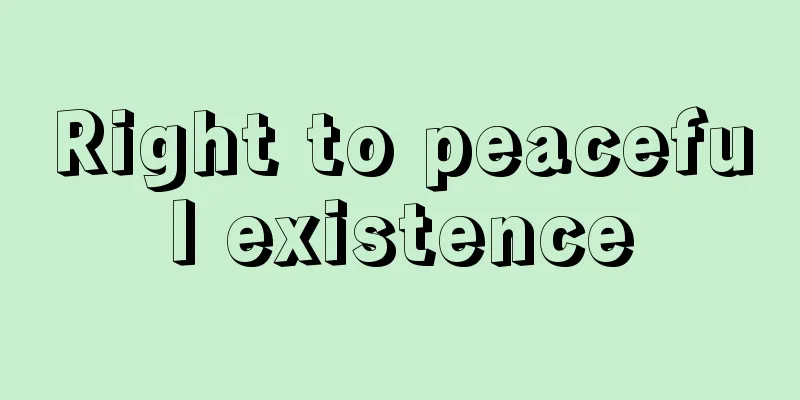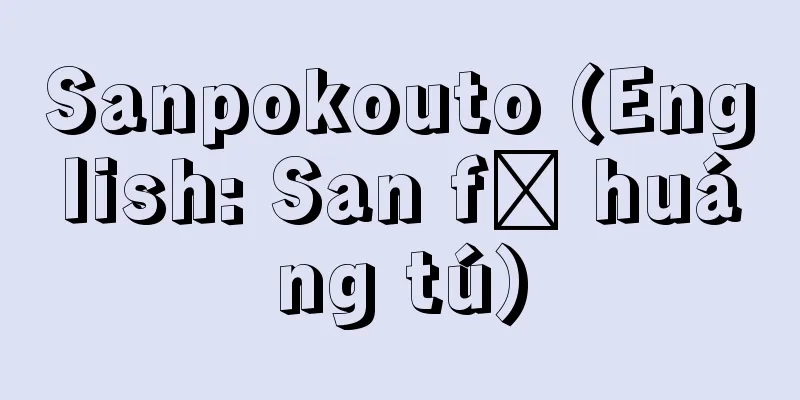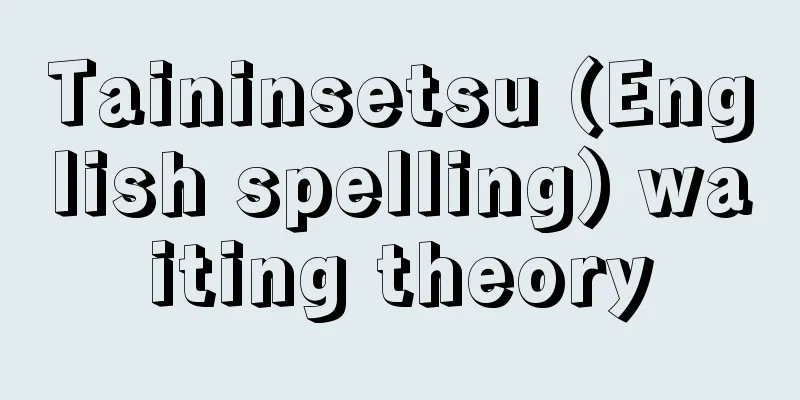Right to peaceful existence

|
A new human rights idea that advocates that ensuring peace is absolutely necessary for human survival. Unlike the right to freedom, the right to vote, and the right to social life, it is not explicitly stipulated in constitutions, but it has come to attract attention since the end of World War II, when pacifism was advocated in constitutions such as the Constitution of Japan, the Constitution of the Fourth French Republic, and the Constitution of the Italian Republic. The origin of the idea of the right to peaceful existence can be traced back to the political thought of Hobbes. He stated that the most important thing for humans is the preservation of life (self-preservation), and that in a state of nature where humans have no government or laws, humans have a natural right to protect their own lives. However, in a state of nature, situations in which lives are at risk constantly arise, and therefore exercising natural rights would result in "a state of war of all against all," so he said that humans should stop exercising natural rights, enter into contracts to establish common power, elect representatives (sovereigns), and live peacefully in accordance with the laws they enact. Stopping the exercise of natural rights is equivalent to telling each person to lay down their weapons, and the reason why everyone in modern nations is safe even when unarmed is because each person has laid down their arms and come to live under common laws. If we consider this at the level of international society, it would lead to complete disarmament. The preamble of the Japanese Constitution states, "We affirm that we have the right to live in peace," and Article 9 proclaims the "renunciation of war." However, since the Self-Defense Forces were established in response to the change in the international situation, such as the intensification of the conflict between the United States and the Soviet Union, the right to peaceful existence is recognized as an idea, but few people think of it as a specific right that can be asserted in court. One example of a court decision that recognized the right to peaceful existence is the Sapporo District Court's first-instance ruling in the Naganuma Nike case (1967), which handled a lawsuit over whether the existence of the Self-Defense Forces was constitutional or unconstitutional. The ruling found that the existence of the Self-Defense Forces was unconstitutional, and recognized the right to peaceful existence based on the preamble of the Constitution, and stated that the specific content of the right is stipulated in each human rights clause in Chapter 3. However, in the Sapporo High Court's second-instance ruling (1973), the issue of the constitutionality or unconstitutionality of the Self-Defense Forces was avoided from a constitutional judgment by using the "theory of government acts," and while the right to peaceful existence was recognized as an idea, it avoided touching on it, stating that there were no rules (judicial norms) that could be used as a standard for judgment in court. [Hiroshi Tanaka] Source: Shogakukan Encyclopedia Nipponica About Encyclopedia Nipponica Information | Legend |
|
人間の生存にとって平和の確保が絶対に必要であるとして唱えられるようになった新しい人権思想。自由権、参政権、社会(生存)権のように憲法上の明文の規定はないが、第二次世界大戦後、日本国憲法をはじめとして、フランス第四共和国憲法やイタリア共和国憲法などに平和主義が掲げられるなかで注目されるようになった。 平和的生存権の思想源流は、ホッブズの政治思想にまでさかのぼることができる。彼は、人間にとってもっとも重要なことは生命の保存(自己保存)にある、と述べ、人間が政府や法律をもたない自然状態においては人間は自分の生命を守る自然権をもっている、という。しかし、自然状態では生命の危険にさらされる状況が絶えず発生し、そのため自然権を行使すると「万人の万人に対する闘争状態」になるから、人間は自然権を行使することをやめて、契約を結んで共通権力を設け、代表者(主権者)を選んで、それが制定する法律に従って平和に生きよ、と述べている。自然権の行使をやめるということは、各人に武器を捨てよといっていることに等しく、近代国家において各人が丸腰でありながら安全であるのは、各人が武装放棄し、共通の法律の下で生きるようになったためである。これを国際社会のレベルで考えれば、完全軍縮にまで行き着くであろう。日本国憲法では前文において、「われらは……平和のうちに生存する権利を有することを確認する」と述べ、第9条において「戦争の放棄」をうたっているが、その後の米ソの対立激化という国際情勢の変化によって自衛隊が創設されたため、平和的生存権は理念としては認めても、裁判所において主張できる具体的な権利として認める考え方は少ない。平和的生存権を認めた裁判例としては、自衛隊の存在は合憲か違憲かをめぐる違憲訴訟を取り扱った札幌地裁の長沼ナイキ訴訟第一審判決(1967)がある。そこでは自衛隊の存在は違憲であるとし、平和的生存権については憲法前文を根拠にそれを認め、その具体的内容は第3章の各人権条項に規定されている、と述べている。しかし、第二審の札幌高裁判決(1973)では、自衛隊の合憲・違憲をめぐる問題は「統治行為論」によって憲法判断を回避し、また平和的生存権については理念としては認めつつも、裁判所での判断の基準となるルール(裁判規範)がないとして、それに触れることを避けている。 [田中 浩] 出典 小学館 日本大百科全書(ニッポニカ)日本大百科全書(ニッポニカ)について 情報 | 凡例 |
>>: Peace Treaty - Heiwajoyaku
Recommend
Goette's larva
… They are hermaphrodites, with both male and fem...
Brother and sister
A short story by Muro Saisei. Published in Bungei...
Jujireki - Jujireki
One of the Chinese calendar systems. It was creat...
Rhizoertha dominica (English spelling) Rhizoertha dominica
… [Chokane Hayashi]. … *Some of the terminology t...
Caprifoliaceae
...A few species are cultivated for decorative pu...
Artemisia major - Artemisia major
…These species are characterized by the lack of h...
Chapter of a Church (English: capitulum [Latin])
An institution of the Roman Catholic Church (chapt...
Suetonius - Gaius Suetonius Tranquillus
A biographer of the early Roman Empire. A friend ...
Spider plant - Orizururan
A perennial plant of the lily family (APG classif...
Information science - information science
What is Information Science? If there was one sin...
Cowhide root extract - Gyuhishokon
…The Japanese name comes from the Ainu word meani...
"The Perfect Marriage: A Study of Its Physiology and Technique" - Kanzennaru Kekkon
…While treating patients who were troubled or wor...
Soluble RNA
...There are many other possible functions of rRN...
Organization of Petroleum Exporting Countries
…Abbreviation for Organization of Petroleum Expor...
Wooden coffin - Mokkan
A general term for wooden containers for storing ...









